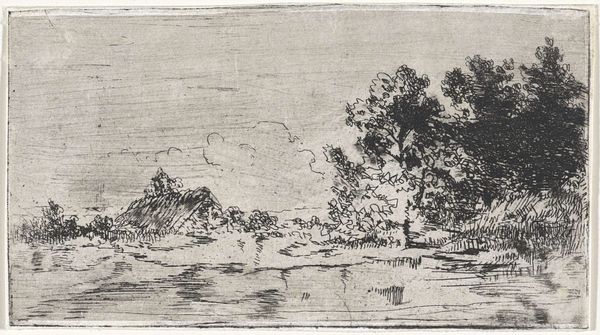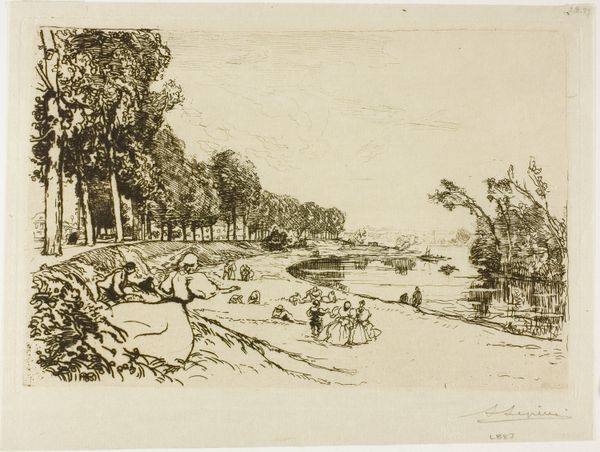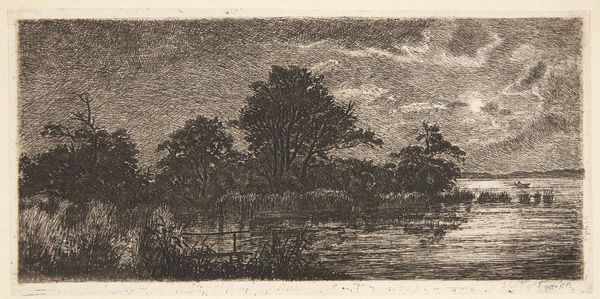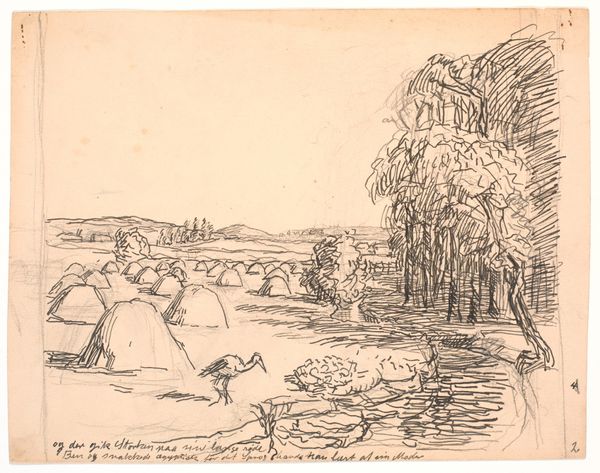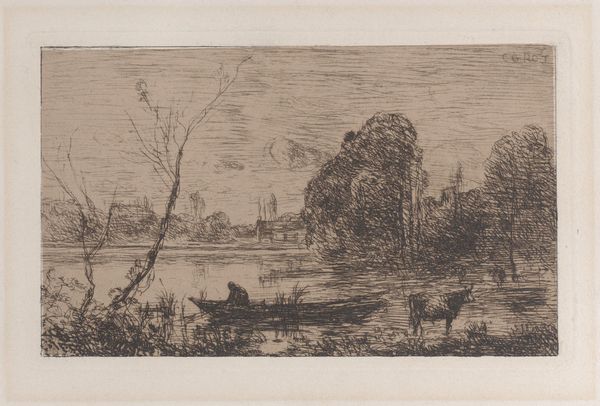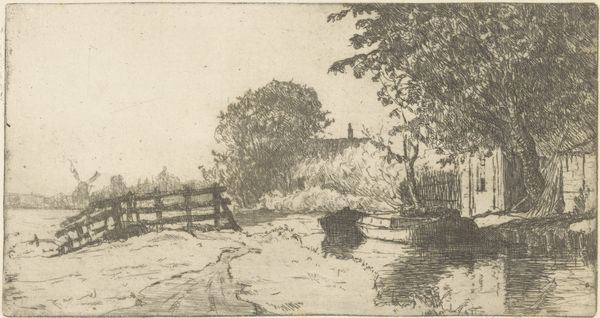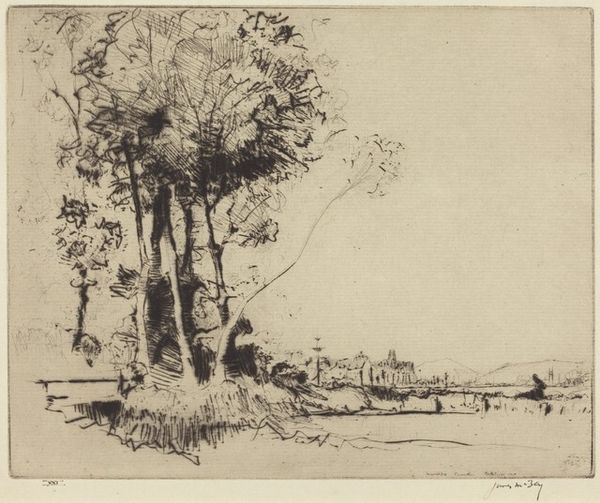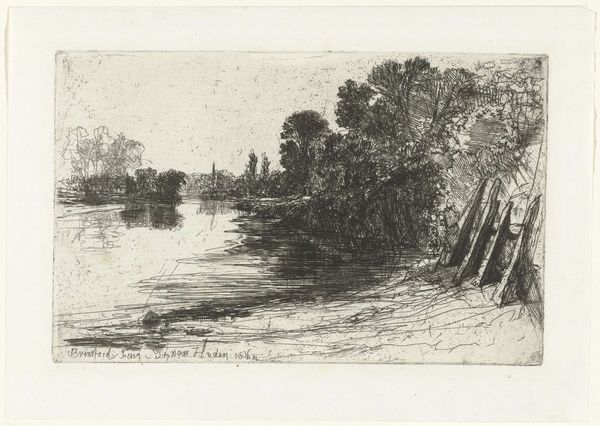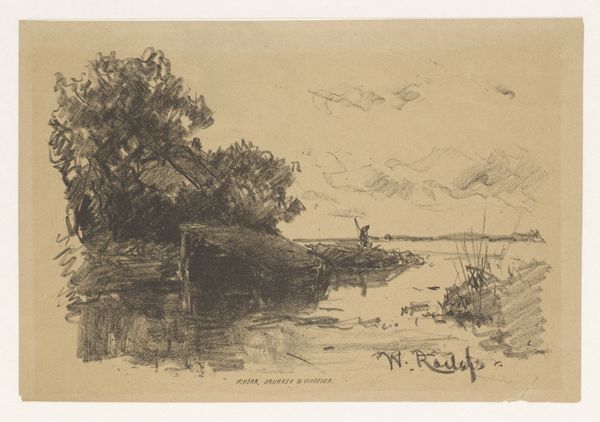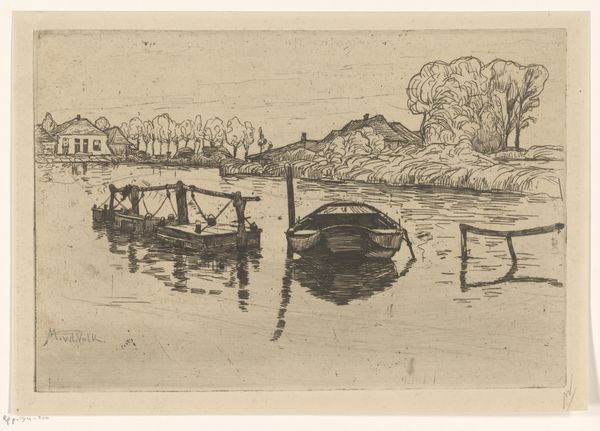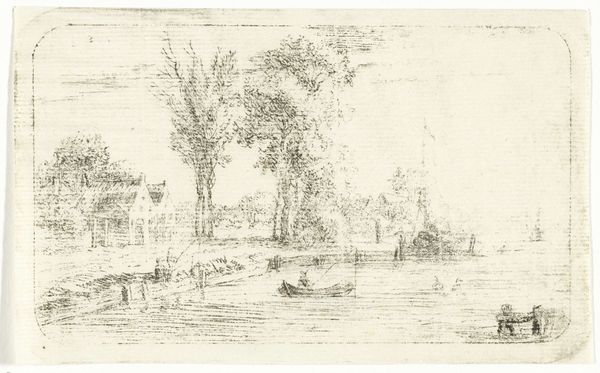
etching
#
pen and ink
#
ink drawing
#
etching
#
landscape
#
river
#
etching
#
realism
Dimensions: height 177 mm, width 264 mm
Copyright: Rijks Museum: Open Domain
Curator: This is Sir Francis Seymour Haden's "De rivier de Test bij Longparish," an etching completed in 1882 and now held at the Rijksmuseum. Editor: The immediate impression is of tranquility, albeit a slightly somber one. The textures achieved with the etching technique create a hushed, almost brooding atmosphere over the river scene. Curator: Indeed, the atmospheric effect is striking. Considering Haden's dedication to etching as a 'painter-engraver' practice, it’s vital to observe how he used line and tone to create the landscape. His conscious labour is obvious here; creating depth from a mass of lines. We should consider also the materials used. Paper production in the late 19th century meant prints such as these became commonplace, shifting traditional power structures in art and knowledge. Editor: I agree; but there's a pastoral symbolism here. The river often represents the passage of time, a continuous flow. The reflections blur the boundaries between the real and the mirrored, inviting introspection. The bridge, although subtly rendered, evokes connections and transitions. Those barely visible figures in the foreground; their purpose seems linked to rituals of the rural working classes - or perhaps more innocent pursuits linked to simple, human pleasure. Curator: Interesting. Viewing the labor involved in etching also gives us a better understanding of the commercial nature of this etching. Consider who may have been his intended consumer: the rising middle classes had increased disposable income and desired readily accessible art such as prints. The shift in consumerism and a shift in modes of working – both essential elements here. Editor: Yet, beyond mere economic exchange, Haden captured something deeper – an emotional resonance. These familiar visual symbols -- the river, the bridge, the trees – connect to the cultural memory of landscape as an idyllic retreat, even tinged with melancholy. It invites viewers to lose themselves. Curator: That cultural element would certainly be key to increased sales and appeal to middle class consumers. I concede, these landscapes act as not only images but vessels of collective aspiration and desires. Editor: Precisely, a confluence of process and deeper meaning. Curator: I’ve been driven to reflect more deeply on these materials now. Editor: As have I – upon how imagery, seemingly commonplace, holds a depthless reservoir of collective yearning.
Comments
No comments
Be the first to comment and join the conversation on the ultimate creative platform.
